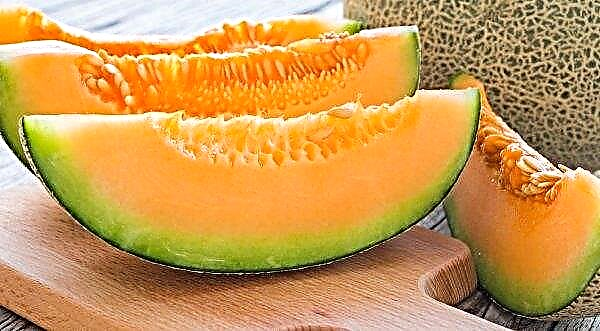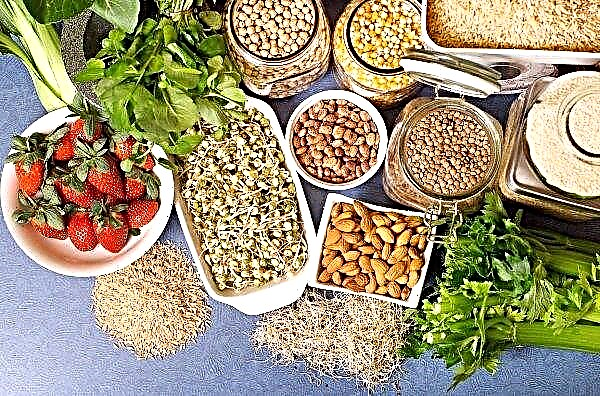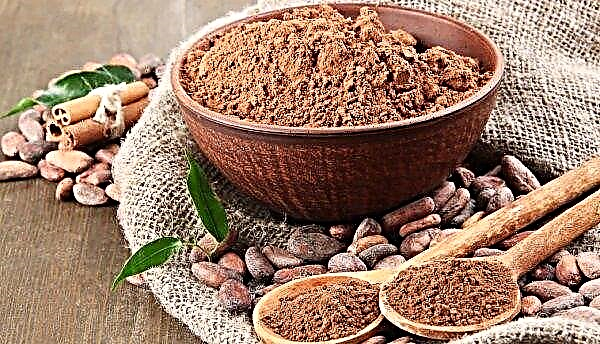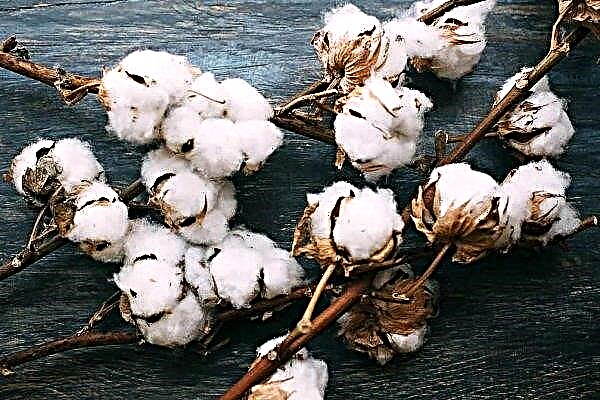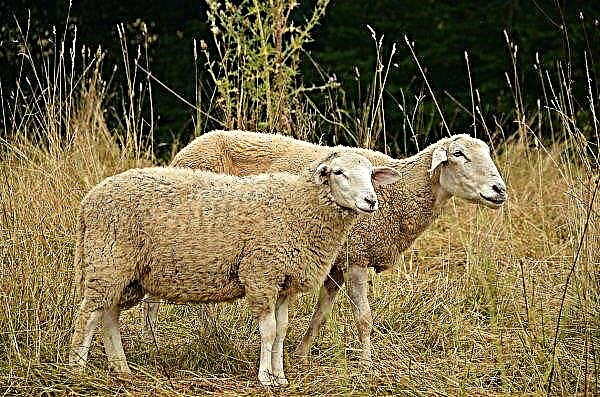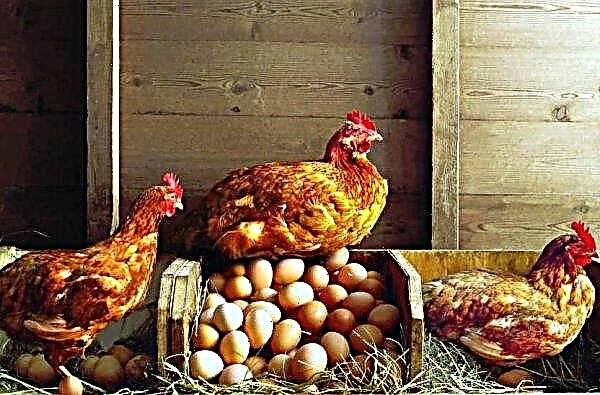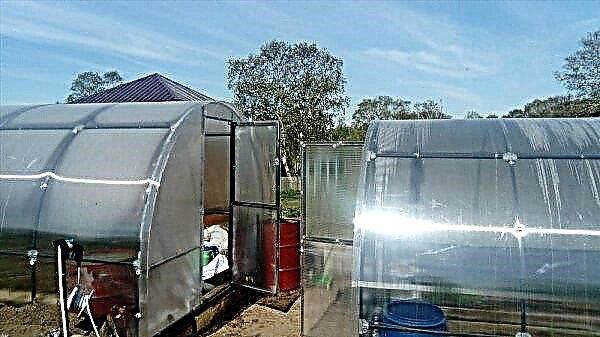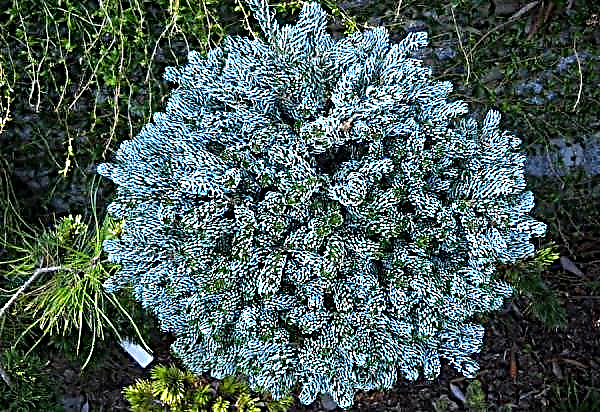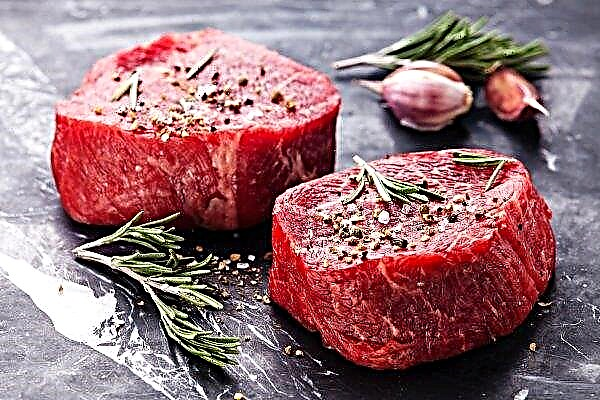Before you go to buy a cow, you should decide on the purpose of its acquisition and breed. Then you need to familiarize yourself with the conditions and amount of feed and make sure that you can provide all this. In the article we will tell you how to determine a good cow during a visual inspection.
Types of cows in the direction
All breeds of cows are divided into 3 species, depending on their direction:
- Lactic.
- Butchery.
- Meat and milk (combined).
If your goal is only to get milk, then you need to choose thoroughbred animals of the dairy direction. They are distinguished by a light head and skeleton, long legs, an elongated body and a large udder. Their lungs and digestive system are well developed. These cows are characterized by high annual milk yields exceeding 3 tons of milk. If you are going to trade beef - look at the 10 best meat breeds, which will be discussed in a separate section below. They are always large in size, characterized by early maturity, high weight, strong physique. Milk, which is produced by carcasses of meat breeds, is usually enough only for feeding calves.
If you are going to trade beef - look at the 10 best meat breeds, which will be discussed in a separate section below. They are always large in size, characterized by early maturity, high weight, strong physique. Milk, which is produced by carcasses of meat breeds, is usually enough only for feeding calves.
If you need individuals with good milk yield and decent meat quality, you should look for boiled meat of the meat and dairy direction, which is beneficial to contain. They have average milk yield, good lethal yield and tasty meat.
Did you know? Scientists suggest that for the first time the domestication of a cow took place during the early Neolithic period in the Altai - India - Near East region. In those days, people tamed tours and zebas, which are considered the ancestors of modern cows. Since then, the body sizes of these animals have decreased by 3 times.
How to choose a cow when buying
So, you have decided what you want to receive from the cow - milk or meat. Next, you need to select the breed and make a visual inspection of the animal. When buying rocks of different directions, attention should be paid to special nuances.
Features of choosing a dairy cow
When choosing a good thrush, you need to pay attention to the appearance of the animal, its behavior, and also necessarily - to the size and shape of the udder.
The best highly milked burenki today are:
| Breed name | The amount of milk per year, kg | The fat content of milk,% |
| Holstein | 6500–7000 | 3,7 |
| Black and white | 5500–6000 | 3,5 |
| Jersey | 3000–3500 | 5–6 |
| Simmental | 5000–6000 | 4 |
| Aishir | 4000–5000 | 4–4,3 |
| Red steppe | 4500–5000 | 3,6–3,7 |
| Hereford | 4500–5000 | 4 |
| Yaroslavskaya | 3000–3500 | 4–4,2 |
| Kholmogorsk | 3500–4000 | 3,6–3,7 |
| Dutch | 4000–4500 | 4 |
External signs
When choosing a thoroughbred cow for milk, you need to ensure that its exterior characteristics comply with the standards. It is impossible to estimate future productivity from external data with accuracy.  However, there are some factors that need to be addressed:
However, there are some factors that need to be addressed:
- age;
- animal health;
- size, shape and condition of the mammary glands.
In addition, you should know that good dairy animals should have a voluminous, but not very saggy stomach, which indicates a well-developed digestive tract, as well as a developed sternum with a large distance between the ribs, which indicates a large lung volume.
It is necessary to give preference to cows with light elongated heads, on which thin non-long horns are located. It is important to pay attention to the development of the sacrum - cows with a wide sacrum are easily accommodated.
Important! If possible, then you need to buy a cow with a veterinarian who will immediately assess her health status and correctly determine her age.
Another nuance that should not go unnoticed when buying a cow is the setting and condition of the lower limbs. They must be strong and widely set, otherwise the animal will be very tired in the pasture and eat poorly, which means it will be unproductive. Leg setting: a) correct, wide legs, b) saber legs, c) elephant, straight legs, d) x-shaped legs
Leg setting: a) correct, wide legs, b) saber legs, c) elephant, straight legs, d) x-shaped legs
Age
Undoubtedly, you do not need to get an old cow. Most often it is advised to buy a heifer - a pregnant female at the 5-6th month of pregnancy. They usually ask for a higher price for it than for a heifer, and less than for an adult individual whose productivity is already known.
The advantages of such an acquisition:
- soon the possibility of obtaining a calf;
- the ability to properly milk a cow and make a good thrush out of it.
- unpredictability of calving - heavy births are possible;
- unpredictability of productivity - it can only be approximately determined on the basis of information about relatives and external characteristics;
- in the future, the heifer will have to be accustomed to milking and crushing on its own - it can take several months and a lot of effort.
 There are rings on the horns. Their number indicates how many times the cow gave birth. To this amount it is necessary to add 2 years - the age at which females are most often covered. Thus, if you count 3 rings on the horns, then the animal is probably 5 years old.
There are rings on the horns. Their number indicates how many times the cow gave birth. To this amount it is necessary to add 2 years - the age at which females are most often covered. Thus, if you count 3 rings on the horns, then the animal is probably 5 years old.If the burenka hotel every year, then the rings on the horns will be placed evenly. If in some year calving did not occur, then the distance between the rings will be uneven.
Health status
Such signs will testify to the well-being of the animal:
- peppy look;
- well-groomed shiny coat;
- lively shiny eyes, without discharge;
- healthy teeth;
- firm and easy gait.

Udder condition
Be sure to inspect the mammary glands. In order to get the greatest amount of milk from a milk cow, you should choose an animal with a wide udder in the shape of a bowl. It should protrude well, adhere to the body and attach high behind. It is good if all 4 lobes are equal and symmetrically located. When feeling, the mammary glands should be soft and elastic, without hardening. When examining the nipples, you should pay attention that they are the same in size - from 8 to 10 cm long and 2-3 cm in diameter, have a cylindrical shape and hang vertically. They should not have any wounds, growths.
Veins should also be visible in the udder, which indicates a well-developed circulatory system. Udder shape: 1 - bath-like - spread far ahead, elongated, wide and fairly deep udder. Its length is 15% and more than the width; in the plan has the form of an elongated oval (ovoid); 2 - cupped - medium length and width, rather deep, somewhat rounded; its length is only 5–15% greater than its width, and in terms of its shape is not a large oval; 3 - rounded narrowed - with a small area of attachment, narrowed downwards, close nipples; 4 - goat - with underdeveloped anterior or strongly hypertrophic and sagging posterior lobes, sharply delimited by the lateral groove; 5 - primitive - underdeveloped, hemispherical, with small, closely spaced nipples. You should abandon the acquisition of heifers with a drooping (goat) udder of a triangular shape with weakly developed lobes, as well as with thick and long nipples. As a rule, such animals give little milk.
Udder shape: 1 - bath-like - spread far ahead, elongated, wide and fairly deep udder. Its length is 15% and more than the width; in the plan has the form of an elongated oval (ovoid); 2 - cupped - medium length and width, rather deep, somewhat rounded; its length is only 5–15% greater than its width, and in terms of its shape is not a large oval; 3 - rounded narrowed - with a small area of attachment, narrowed downwards, close nipples; 4 - goat - with underdeveloped anterior or strongly hypertrophic and sagging posterior lobes, sharply delimited by the lateral groove; 5 - primitive - underdeveloped, hemispherical, with small, closely spaced nipples. You should abandon the acquisition of heifers with a drooping (goat) udder of a triangular shape with weakly developed lobes, as well as with thick and long nipples. As a rule, such animals give little milk.
Important! The development and growth of the udder lasts up to 4-6 births. And the extinction - after 7-8 births. The highest productivity of the cows is usually shown after the 4th calving. The duration of lactation is affected by the conditions of detention, a balanced diet, quality care and competent milking technology.
Features of the choice of meat breeds
The following breeds are ranked as the best meat:
| Breed name | Weight, kg | |
| bull | cow | |
| Aberdeen Angus | 800 | 550 |
| Belgian blue | 1250 | 900 |
| Hereford | 1000 | 600 |
| Kalmyk | 1000 | 550 |
| Kazakh white-headed | 1000 | 600 |
| Santa gertrude | 1000 | 600 |
| Charolese | 1000 | 800 |
| Shorthorn | 1000 | 500 |
| Aquitaine light | 1100 | 560 |
| Kiana | 1200 | 700 |
A good meat cows should have a strong muscular build of the body, with well developed back and front parts. The side of the case should be in the shape of a rectangle. It is necessary to choose individuals with large dimensions, a deep and powerful sternum, thick skin, a massive head and neck, short limbs. The size of the udder in representatives of these breeds does not play a role - as a rule, it is poorly developed. However, when buying, you need to pay attention to its condition.
When buying bulls, you need to pay attention to the condition of their genitals. The cheapest way is to buy meat calves, but you need to take into account the fact that they need to consume breast milk up to 3 months of age.
Omens when choosing cows
Over the centuries, wise people, acquiring and trading cows, have noticed some signs that are now passed down from generation to generation:
- So, it is believed that when buying cattle you can not bargain. Otherwise, the thrush may be offended by the fact that you do not appreciate it, and in the future will repay you obstinacy or low productivity.
- When buying, you need to give such bills so that the seller must have a change. Change must be picked up.
- Inspecting the animal before buying, you need to look into the ears. The presence of a large amount of sulfur in them, according to popular opinion, indicates good fat content of milk.

Additional tips for choosing
When buying a cow, you need to check with the seller the following questions:
- how old is she;
- what is her character;
- the productivity of the mother (if the breed is dairy) and the father (if the breed is meat), sisters and brothers;
- the number of calving and when were the last;
- when the first insemination was made (should be done between 18–20 months);
- were there any problems at calving;
- what food prefers;
- Does she need nutrition during lactation;
- the availability of vaccinations and antiparasitic measures.
How to choose a cow for a cow
If you refused the advice to purchase a heifer or a cow, then you need to know how to choose a heifer. The difficulty is that her body, including the udder, is not yet fully formed. Therefore, it is impossible to judge future productivity from them. In this case, it is only necessary to rely on the healthy appearance of the female, the complaisance of her character and the information provided by the seller about the milkings of the mother and sisters on the maternal and father lines. The age of the heifers is determined by the length of the horns. At the age of 1 to 20 months, the growth of horns is 1 cm per month. That is, to determine the age of the heifers, it is necessary to measure the horns and add 1 to the number of centimeters.
The age of the heifers is determined by the length of the horns. At the age of 1 to 20 months, the growth of horns is 1 cm per month. That is, to determine the age of the heifers, it is necessary to measure the horns and add 1 to the number of centimeters.
At 18 months, a healthy heifer should weigh at least 300 kg.
Thus, in order to get a good cow with high productivity, you should pay attention to its physique, health status and age. When choosing a dairy breed, one should give preference to those individuals who have underdeveloped muscles, strong legs, a large barrel-shaped belly and a large udder in the form of a bowl with clearly visible veins. When choosing a cow for meat, you need to take a large individual, with a deep chest, a muscular build of the body.Did you know? The average life expectancy of cows is 20 years. The longevity record in the world was set by a cow named Big Bert. She died in 1993, having lived 48 years and 9 months. Throughout her life, she gave birth to 39 calves.

